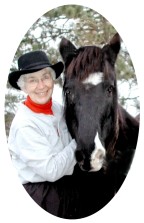Cannon Falls Police Department Citizens Academy ReviewFrom left to right are: Rosie Schluter, Tim Dehmer, Jay Sjoblom, Rod Holst, Aaron Ekstrom, Mike Manning and Chief Jeff McCormick.
What, Why and How...
Cops doing their duty
.
The use of assault rifles.
Deciding if a person is under the influence.
Under what circumstances should you shoot?
These are some of the opportunities presented to six area citizens in the recent seven week Cannon Falls Police Department Citizens Academy.
Once a week programs ranged from seminars by law enforcement representatives, including the police, county attorney, county judge and volunteers. In the latter case, two people took part in the Standard Field Sobriety Testing to demonstrate what police officers look for in making a DUI arrest.
The purpose of the program, according to Cannon Falls Police Chief, Jeff McCormick, is to educate the public as to the “What, why and how we do do things.” McCormick continued, “We are privy to some of the deepest, darkest secrets of society… but the police are there to protect the quality of life issues of the community.”
Usually the public doesn’t get to see what the police are doing in an “on-going” investigation. Some things cannot be made known at that time.
Some of the information given at the academy will probably not be made public either. All of the students had to pass background checks and when taking part in a “Ride Along” with a cop they were warned not to reveal names of people who might be encountered.
Some of the stories told helped the students get a feel for being a cop. Like the danger from passing cars when making a traffic stop. Officer Scott Mattingly recalled feeling a mirror of a car pass near his back.
Also, the citizen participants got to drive a squad car (at city hall) as they learned the rules in making a traffic stop. Example: shine your flashlight at an angle if the windows are tinted… look for weapons and anything else illegal… watch the movement of the passengers in the car… be careful so the door doesn’t open on you… approach the car with your gun side away from it so your hand is free… as you walk up to the car, touch the trunk to make sure it’s closed because people have jumped out of one… this also means your fingerprints are on the car so you can identify the vehicle if needed.
Some of the topics covered are included in these photos from the course.
Use of Force demonstration included using a tazer on volunteer, Tim Dehmer. Police Chief Jeff McCormick also volunteered. Here Officer Dave Timm helps Dehmer.
Rod Holst uses a demo assault rifle in a “routine” traffic stop that turns out "bad".
.
Taking fingerprints off evidence is demonstrated by Jay Sjoblom and was taught by police officers Scott Mattingly and Dave Timm
First one to volunteer to shoot was me. I figured, if I’m going to embarrass myself I might as well get it over!
Assault rifle instructor, Officer Dave Timm, instructs Aaron Ekstrom at the rifle range.
A Glock handgun is aimed by Mike Manning with an approving smile from instructor, Dave Timm.
The academy led to a greater understanding
of the men and women in law enforcement
and the commeraderie and experiences
that bind them.
.

